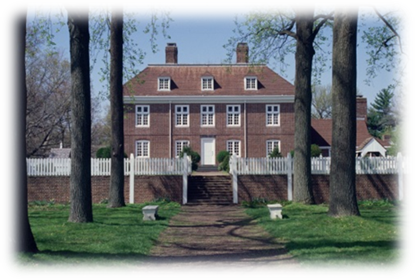Baby It's Hot Outside!
/Oh those lazy days of summer . . . The longer days filled with trips to the beach, cookouts with garden-fresh vegetables, and evenings in the park. This month we tip our hats to mechanical engineer Willis Haviland Carrier and celebrate the idea that helped make those long, hot days a little more comfortable: air conditioning.
Weightman Hall was originally constructed as a field house. It houses offices of the Penn Athletic Department and the Penn Sports Medicine Center.
Ventilation Study at the University of Pennsylvania
SSM completed a study to provide options to ventilate the “attic” space of Weightman Hall. The space contained two air conditioners discharging hot condenser air into the space. The existing ventilation of this space was not sufficient to remove the heat leading to an increased load on the air conditioners and decrease in performance of the units which are rated at ambient temperatures of 95 degrees F. Temperatures in the attic space were believed to exceed 120 degree F.
SSM explored options to ventilate the space housing the air conditioners to provide a satisfactory ambient condition or modify the installation to mitigate the impact of being installed in an interior space. SSM mechanical engineers surveyed the site and documented existing conditions including several existing and apparently abandoned duct systems in the vicinity of the air conditioners and the space in which the units are housed and the surrounding areas in sufficient detail to develop ventilation options. The final report included three options for creating a satisfactory environment for the operation of the air conditioning units and budgetary construction costs for each scenario.
Pennsbury Manor is a historic recreation of William Penn’s 17th century estate, it is located along the Delaware River and open to the Public for tours. There are several other buildings located on the 43-acre property including a Visitor’s Center, and the Crozier House which is currently used as office space.
Exploring Alternative Technologies for Cooling Historical Structures at Pennsbury Manor
Known as “William Penn’s Country House”, Pennsbury Manor includes several buildings recently included in a design project to replace and upgrade existing HVAC systems on the campus with geothermal systems. Working closely with the Department of General Services and The Pennsylvania Historical and Museum Commission, the multi-discipline mechanical, electrical, and hydrogeology staff of Spotts, Stevens and McCoy, along with architectural and archaeological partners took on the challenges often presented by similar historic and sensitive structures. Outdated HVAC, plumbing and electrical systems are common limitations that can be resolved with innovative application of new technologies. SSM designed the HVAC systems within the buildings, electrical and plumbing systems in support of the HVAC system design, coordinated with Agency Fire and Security and Controls consultants, and developed a preliminary construction phasing plan for the project. In addition we analyzed the assessment reports and developed a preliminary abatement plan.
The Manor House – It was imperative for the mechanical system to integrate with the existing architecture. A whole house ventilation system was designed to attempt to improve the indoor environment during the cooling season. Geothermal water source heat pumps were located in the basement to draw outdoor air into the building and supply it through floor registers at existing chases. The air was then exhausted by fans located in the attic space. A geothermal boiler was also installed to replace two electric boilers. The geothermal boiler and geothermal heat pumps used an open loop ground system to transfer heat to and from the ground water.
The Visitor’s Center – The open loop system was also used at the Visitor’s Center. The existing system consisted of an air-cooled chiller, a gas boiler, fan coil units, and DX air handling units. The existing chiller was replaced with a geothermal heat recovery chiller. The chiller is capable of making heating water and chilled water simultaneously so there is no longer a need for the existing oil-fired boiler. The existing DX cooling coils and electric heating coils were replaced in the air handling units and fan coil units so the entire system can run off the new geothermal heat recovery chiller.
The Crozier House – The existing heating system at the Crozier House was an oiled-fired boiler with radiator units located throughout the space. There was no existing air conditioning system. The new mechanical system design is a VRF system that will be able to provide heating or cooling simultaneously to each space.



